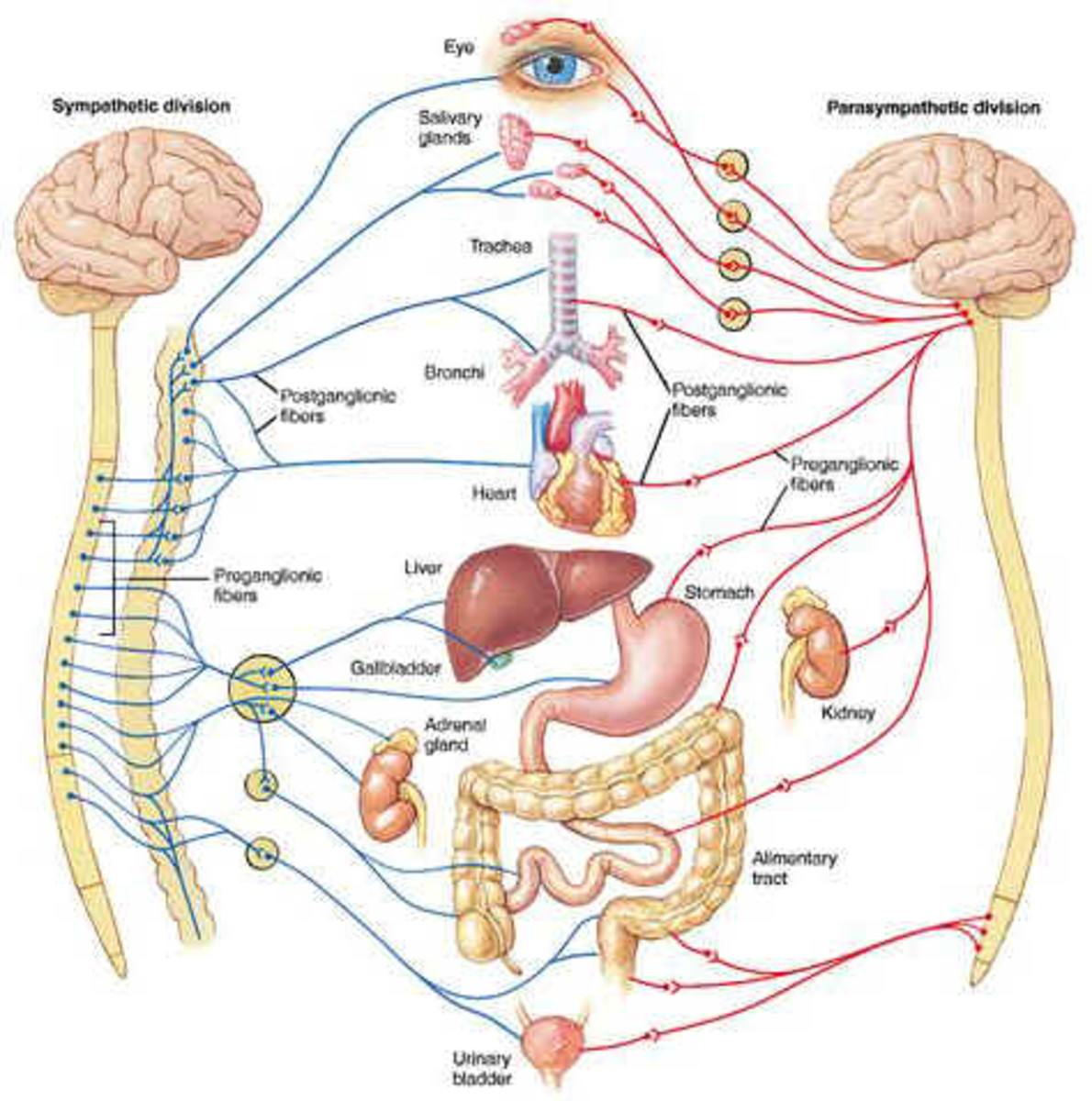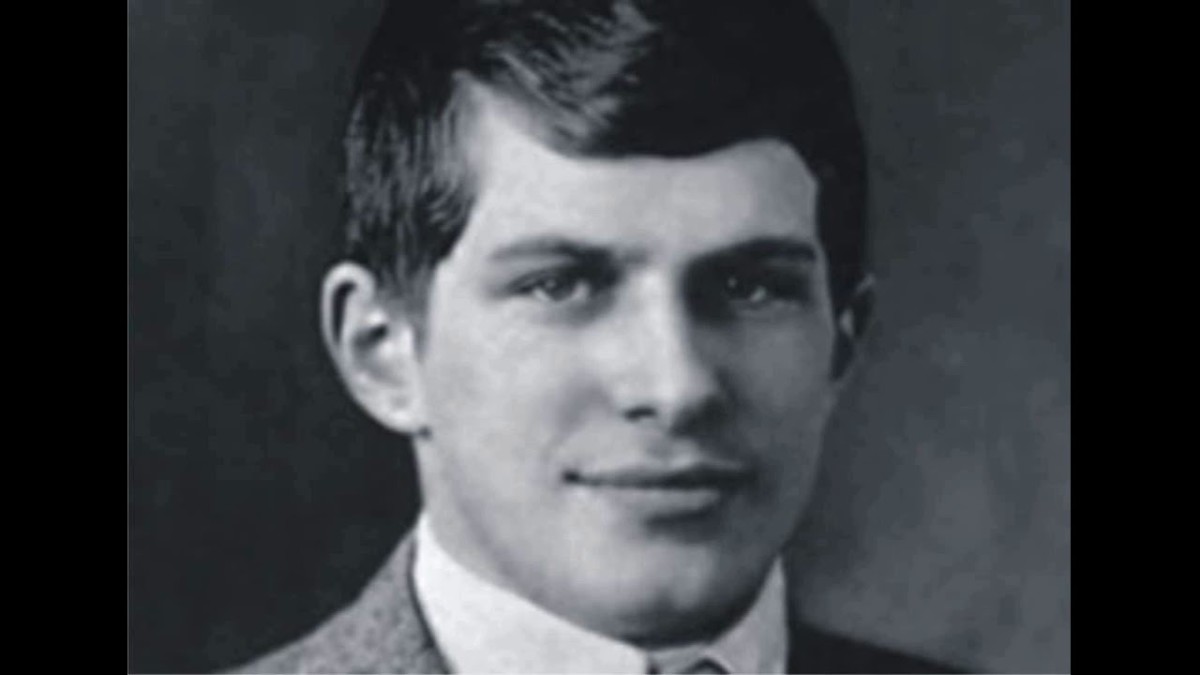Psychology of Managing Stress Critical Thinking Essays
1. Describe the role of the autonomic nervous system in the stress response.
2. Explain the importance of the adrenal gland in the stress response. Identify the hormones secreted by the adrenal gland and the effects these hormones have on the body.
The autonomic nervous system runs the automatic functions of the body; for example, the heart rate, digestion, breathing, and the hormonal system. The autonomic nervous system is composed of two different systems that both play a key part in the stress response. The first part is called the sympathetic nervous system. The sympathetic nervous system is responsible for initiating the stress response by triggering the fight or flight response. The sympathetic nervous system does this by releasing substances called epinephrine, also known as adrenaline and norepinephrine or noradrenaline. The second part is called the parasympathetic nervous system. This part of the autonomic nervous system is responsible for energy conservation and relaxation. The parasympathetic nervous system returns the body to homeostasis by releasing a neurological agent called acetylcholine. Acetylcholine decreases the amount of metabolic activity in the body.
The adrenal gland, also known as the stress gland, is made of two different parts - the adrenal cortex and the adrenal medulla. The adrenal gland’s role is to release the hormones that fuel the fight or flight response. The adrenal cortex is the exterior of the adrenal gland, “and it manufactures and releases hormones called corticosteroids” (Seaward 52). The corticosteroids that the adrenal cortex releases are called glucocorticoids and mineralocorticoids. The adrenal medulla is the inside of the adrenal gland that secretes catecholamines. The catecholamines that the adrenal medulla secretes are called epinephrine and norepinephrine; these “act in a similar fashion as those secreted at the endings of the sympathetic nerves” (Seaward 53). Under the influence of stress the adrenal medulla releases 20 percent norepinephrine and 80 percent epinephrine. This is three hundred times the amount of norepinephrine and epinephrine in the blood when the body is resting.
- 1. Pick one of the stress disease theories from this chapter and discuss how this model explains the relationship between stress and disease. These models include: Pert, Lipton, etc.
- 2. Do you think this model does a good job of explaining the relationship between stress and disease, why or why not?
In Chapter Four of Managing Stress we learn about the different stress disease theories. One of the stress disease theories explored is the Gerber model. The Gerber model is different from the other models because it uses a holistic approach to how stress affects disease. The Gerber model hypothesizes that “stress related-symptoms that appear in the physical body are the manifestations of ‘problems’ that have occurred earlier as a result of a disturbance at a ‘higher energy level’” (Seaward 71).
The Gerber model is based on the theory that the human energy field or the electromagnetic field exists. The human energy field is believed to have many layers and each layer represents a state of consciousness. The believed levels of consciousness are physical body, etheric body, astral body, mental body, and casual body. Gerber says that in the optimal state of health all frequencies/layers of the human energy field are in complete harmony and a disruption of that harmony will lead to illness and disease. According to the Geber model thoughts like “This grade will put me on academic probation” (Seaward 71) paired with an emotion, in this case fear, will cause a disruption that will cascade through the energy levels. The result is an effect on some part of the body like a suppressed immune system.
The Gerber model uses the seven chakras to explain the different energy levels. The model goes onto explain what a disruption in each Chakra would cause as well as what each Chakra represents. The Gerber model teaches us that each chakra is unique and different. For example the first Chakra or the root chakra is associated with issues with safety and security, a disruption in the first chakra could cause lower-back pain, sciatica, and some forms of cancer. The fifth chakra, or the throat chakra, represents communication, personal expression, creativity, willpower, and a purpose in life. A disruption in the third chakra can result in throat and mouth cancers, stiffness in the neck, migraines, and cancerous tumors.
I feel that the Gerber model does a good job of explaining the relationship between stress and disease. I found that some of the other models were too technical in nature, for example the Lipton model goes into the study of molecular mechanisms and DNA. In contrast, the Gerber model is much easier to understand; it talks about chakras and energy levels, both topics that I do not need any prior medical or scientific background knowledge to understand.
1. Which of the anger mismanagement styles do you most often use?
2. Give an example of how you have demonstrated this anger mismanagement style in the past.
3. Discuss three ways you can express your anger in "healthy" ways. (please be sure to discuss these concepts; don't just list them.)
In Chapter Six of Managing Stress Brian Seaward introduces two main anger related concepts. These two concepts are known as anger mismanagement and healthy anger management. Anger mismanagement is when a person either does not manage their anger or does so in a way that harms either themselves or someone else. Healthy anger management is when a person achieves an effective catharsis. A catharsis is an “emotional release through crying, yelling, laughing, and the like” (Seaward 129). I find that the anger mismanagement style that I use is the somatizer style.
A person who is a somatizer is “a person exhibiting an anger style by suppressing rather than expressing feelings of anger. Soma means body, and when anger is suppressed, an unresolved anger issues appear as symptoms of disease and illness” (Seaward 130). One example of how I demonstrate the somatizer style of anger mismanagement is that when I become angry at my father instead of expressing my anger I suppress it so as to not lose his approval. I have also noticed that I sometimes suffer from headaches after suppressing my anger.
One way I can express my anger in a healthy way is to use understandable language to communicate my anger. I need to be better at not sugar-coating my anger and instead be clear about my anger. To do this I will attempt to make well-defined statements like “You really made me mad when you…” (Seaward 130). A second way to express my anger is to turn complaints into requests. If I am angry at someone, instead of complaining to them about what they did to make me angry I will instead request that the person not do it again. A third way to express my anger in a healthy way is to try to avoid being a somatizer. Instead of walking away from the person that made me angry I will instead talk the anger out with that person in a way that does not provoke retaliation. By doing this I will prevent my anger from manifesting itself as a physical symptom.
Discuss the four steps to cognitive restructuring.
The first stage of cognitive restructuring is known as awareness. The awareness stage is composed of three parts. First stressors are identified and acknowledged, then the identification of why the situations are stressful and what emotional attitudes are associated with each situation, and finally the primary stressor is appraised and the feelings associated with it are acknowledged. The second stage of cognitive restructuring is called reappraisal of the situation. This is when the mind does a secondary reappraisal, in effect getting a second opinion; the mind generates an objective view of the situation. This is the stage where the person chooses a neutral or positive stance to deal with the issue they are experiencing. The third stage is adoption and substitution. This is the most difficult stage as this is where the attitude change is implemented; the new mind frame replaces the negative mind frame. The fourth and final stage of cognitive restructuring is evaluation. This is the time where a person questions if the new attitude worked and, if it did, how beneficial was it. If the new attitude was a complete failure, then the person returns to stage two and needs to complete a new reappraisal.
1. Describe three of the benefits of using journal writing as a coping technique.
2. Discuss the immediate and long term effects of journal writing.
3. Describe three of the tips and suggestions in your textbook that aid in the process of journal writing.
In Chapter Eleven of Managing Stress Seaward introduces the benefits of using journal writing as a coping technique. When people read their journal, they begin to notice patterns in their behaviors, specifically patterns that cause anger, anxiety, and/or stress. Journal writing can strengthen the bond of honesty between a person’s mind and soul thereby fostering a better understanding of themselves. Journal writing allows a person to detach themselves from the contents of their journal and allows them to be able to consider events with less bias.
When a person writes a journal, they will feel certain effects almost immediately and others not until later. In the short term journal writing can act as an emotion catharsis by getting toxic thoughts out of the writers head and onto paper. A journal writer will almost immediately begin to have increased self-awareness and take ownership of their feelings. In the long term a journal writer will develop an awareness of patterns in their attitudes, values, and behaviors that cause a stress response. A diligent writer will eventually have a “personal resolution” once they are able to detach themselves from their journal enough to view their own actions as an impartial outsider.
Seaward offers many tips and suggestions to aid in the process of journal writing. One of his tips is to have relaxing music playing in the background to relax the mind enough to allow thoughts and emotions to flow. This is a tip that I plan to use when I journal. I feel that music will help me to relax enough that I won’t be worried about what I’m writing. A second tip is to keep the journal completely private so as to avoid compromising the honesty of the writer. I am going to take this suggestion to heart; I don’t feel that I could be completely honest in my journal if I knew that someone else was going to read it. A third tip was to be spontaneous and to allow thoughts to flow freely, without sentences and paragraphs. When the writer worries too much about how to phrase a thought the essence of the actual thought becomes diluted or lost.
Describe the physical and psychological benefits of laughter. In your textbook your author covers ways to initiate humor therapy. Choose one of these suggestions and discuss how you could use it to increase humor in your life.
In Chapter Thirteen of Managing Stress Brian Seaward introduces us to the concept known as humor therapy. Humor therapy is “a coping technique; the use of humor and comic relief as a means to relieve and reduce emotional stress by focusing on the funny, humorous, and positive aspects of life” (Seaward 284). Laughter can have profound physical and psychological benefits. One step towards implementing humor therapy in one’s life is to improve one’s self-esteem.
The psychological benefits of both laughter and humor are numerous. The main psychological benefit is the uniting of the mind, body, and spirit for total well-being. Other psychological benefits include the dissolving the walls around one’s ego, increased pleasure, reduced pain, balance between positive and negative perceptions, stress buffer, and the defusing of anger and anxiety. There are also many physical benefits from laughter. The main physical benefit that comes from laughter is the strengthening of the integrity of the immune system. The other physical benefits of laughter are stabilized blood pressure, massaging of vital organs, facilitating digestion, stimulating circulation, and increasing the oxygenated blood throughout the entire body.
There are a total of eight possible steps to initiate humor therapy. Out of the eight steps I believe that step eight, known as improving your self-esteem, is the most important step. This step is so important because it is hard to laugh when one’s self-esteem is deflated. To improve one’s self-esteem one needs to give themselves positive affirmations every day in order to accentuate one’s good qualities. This step can help a person to accept and love themselves and all of their humor potential
Based on the reading from chapter 18, discuss the physiological and psychological effects of meditation. In your answer include the effects of meditation as well as some of the research that supports the findings you describe.
In Chapter 18 of Managing Stress Seaward introduces us to meditation. We begin to explore the physiological and psychological effects that can be caused by meditation. Meditation is the “practice of increased concentration that leads to increased awareness; a solitary practice of reflection on internal rather than external stimuli” (Seaward 369).
The physiological effects of mediation have been studied extensively around the world. Some researchers of note include Wallace, Benson, Bagchi, Wenger, Bross, and Michael Delmonte. After many different studies and long periods of observation scientists concluded that mediation did in fact have many physiological effects. It was noted that regular meditation can decrease the amount oxygen consumption, heart rate, blood pressure, muscle tension, and blood lactate levels. It was also noted that Yogi Masters and others who regularly spend long periods of time in meditation could gain control of their autonomic nervous system. In 1972 medical research team headed by Robert Wallace and Herbert Benson investigated Transcendental Meditation or TM; they found that TM induced a profound state of physiological homeostasis.
The psychological effects of mediation have also been studied extensively. The psychological effects of meditation differ from person to person, but meditation generally helps to calm the mind and bring about mental homeostasis. In 2005 Bootzin and Stevens observed that when adolescent substances users practiced mediation they began to have improved sleep function. In 2006 Rausch observed that after a single meditation session college students began to demonstrate a reduction in provoked anxiety. Delmonte decided that above all else meditation promoted a greater sense of well-being or inner peace. Today psychotherapy incorporates mediation in order to promote psychological well-being.





